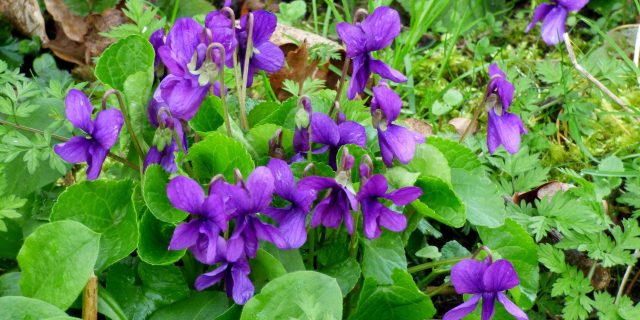24
Mar
Certain Essential Oils Found To Be Highly Effective at Killing Mosquito Larvae and Adults

(Beyond Pesticides, March 24, 2022) A range of essential oils can provide high levels of larvicidal and adulticidal activity against a commonly found species of mosquito, according to research published last week in Scientific Reports. The use of essential oils in mosquito management has generally been limited to personal protection, with synthetic pesticides often the first choice for vector control activities. This research highlights the potential role of these natural compounds to replace hazardous synthetics in managing larval sources and killing adult mosquitoes under last-resort scenarios.
The team of Egyptian-based scientists conducting the study purchased 32 different essential oils from a regional retailer in order to test them on both the larval and adult stages of Culex pipiens. C. pipiens, often referred to as the common house mosquito, is the most abundant mosquito in the Northern U.S., and is known to vector West Nile virus and Saint Louis encephalitis, among other diseases.
Larval efficacy was tested on the fourth instar larvae of C. pipiens, delivered through a mixture of the essential oil, water, and the solvent Tween-20, which contains the surfactant Polysorbate-20, used to emulsify the mixture. All oils tested had some level of larvicidal activity (between 60-100%). Researchers classified the oils into three different groups: highly, moderately, and least effective. Highly effective oils achieved 95-100% mortality over a 48-hour period, and included garlic (Allium sativum), dill (Anethum graveolens), tea plant (Camellia sinensis), fennel (Foeniculum vulgare), fennel flower (Nigella sativa), sage (Salvia officinalis), garden thyme (T. vulgaris), and sweet violet (Viola odorata). In the moderately effective group, Salai guggul (B. serrata), cumin (C. cyminum), wild tumeric (C. aromatic), garden cress (L. sativum), tea tree (M. alternifolia), black pepper (P. nigrum), and magnolia berry (S. chinensis) recorded 81-92% mortality over 48 hours. Of the 17 least effective oils remaining, sesame (S. indicum) and cannabis (C. sativus) exhibited the lowest mortality rates, at roughly 60% over a 48-hour period.
Researchers then tested the high larval efficacy group on adult mosquitoes, utilizing the U.S. Centers for Disease Control and Prevention’s bottle bioassay testing protocol. In a solution of 10% essential oil, mortality rates post treatment were 49% for garlic (Allium sativum), 88% for dill (Anethum graveolens),  64% for the tea plant (Camellia sinensis), 51% for fennel (Foeniculum vulgare), 93% for fennel flower (Nigella sativa), 44% for sage (Salvia officinalis), 72% for garden thyme (T. vulgaris), and 100% for sweet violet (Viola odorata).
In sum, the researchers note, “Camellia sinensis [tea plant] and F. vulgare [fennel] were the most potent larvicides whereas V. odorata [sweet violet], T. vulgaris [garden thyme], An. Graveolens [dill] and N. sativa [fennel flower] were the best adulticides and they could be used for integrated mosquito control… EOs could serve as suitable alternatives to synthetic insecticides because they are relatively safe, available, and biodegradable.”
The results of the study line up with research on the efficacy of essential oil-based sprays for adulticide applications. A 2019 study in the Florida Journal of Mosquito Control found the product Nature-Cide, containing .5% clove and .5% cottonseed oil to be more effective at managing adult mosquitoes that three of the most commonly used synthetic pyrethroid-based mosquito sprays.
A model approach to mosquito management is a science-based, and prioritizes preventive measures first and foremost. These measures include surveillance, monitoring, public education on eliminating breeding sites and personal protective actions, consideration of local ecology and habitat manipulation. While moving from hazardous synthetics to less toxic, natural and more readily biodegradable products like essential oils present a range of benefits, even these products should only be used based upon monitoring data. Applying any product with insecticidal activity presents risks to nontarget animals and plants in the environment. The use of larvicides should be governed by actions levels established based on prior monitoring data. Some communities, like the City of Boulder, Colorado, are working to limit their use of biological larvicides like bacillus thuringiensis by embracing ecological mosquito management — hiring wetland ecologists to analyze ecosystem health and its capacity to naturally address overabundant mosquito populations.
In the case of adulticides, even least-toxic products should only be considered as a last resort, under strict thresholds, and when the spread of mosquito-borne disease places public and animal health at imminent risk. Aerially applied mosquito adulticides in any form are excessively risky in exposures to people and nontarget organisms, are relatively ineffective in relation to those risks, and should never be considered as part of a sustainable mosquito management program.
For more information on safer mosquito management, see Beyond Pesticides program page. Specific recommendations for least-toxic repellents can be found here, and residents working to change their community mosquito management approach are encouraged to reach out to [email protected].
All unattributed positions and opinions in this piece are those of Beyond Pesticides.
Source: Scientific Reports










